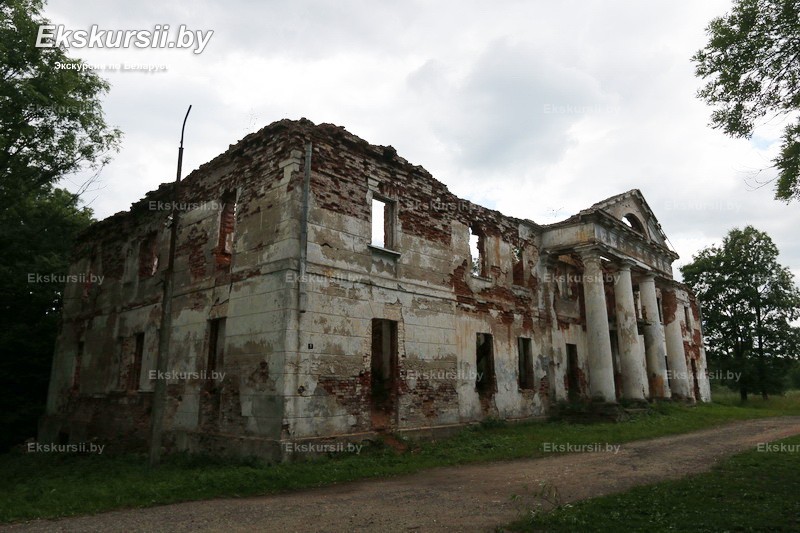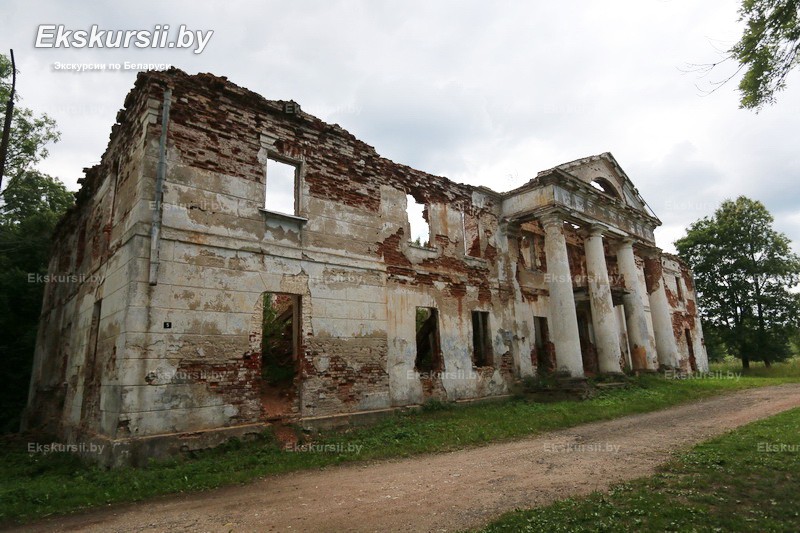- Home
- →
- Attractions
- →
- Grebnitsky Obol manor
Grebnitsky Obol manor
Obol is a small urban settlement, charmingly located on the bank of the river of the same name in the Shumilino district of the Vitebsk region. The settlement is just 23 kilometers from the district center Shumilino and 70 kilometers from Vitebsk, making it easily accessible for tourists. Additionally, Obol is a railway station on the Vitebsk – Polotsk line, which simplifies travel by train.
If you plan a trip to these lands, be sure to visit the local attractions. One of the main gems of the settlement is the ruins of the Grebnitsky estate — the largest structure of its kind in the Shumilino district.
Historical Milestones of Obol
Obol has been known since the 15th century and is mentioned in historical chronicles of that time. Initially, these lands were part of the Grand Duchy of Lithuania, later transferred to the Polish–Lithuanian Commonwealth, and after the first partition of the Commonwealth in 1772, they became part of the Russian Empire. The rapid development of the settlement began with the construction of the Riga–Oryol railway.
At that time, Obol was famous for the production of charcoal, alcohol, tar, and vinegar powder. There was an active water mill here, and by the end of the 19th century, a parish school had been established. In 1924, Obol became the center of the village council, and in 1929 a brick factory began operating, which still functions today as the "Obol Ceramic Plant."
During World War II, the settlement was occupied by Nazi troops. Liberation came only in 1944, and Obol received the status of an urban settlement in 1968.
The Grebnitsky Estate – A Legend of the Shumilino District
The Grebnitsky Estate, built in 1852, was once a luxurious noble mansion. It was a two-story estate with two four-column porticos and a beautiful park with a symmetrical axial layout. The estate’s owners, the Grebnitsky family, also owned several other estates in the region. At its peak, around a hundred people worked here— weavers, shoemakers, tailors, and many other craftsmen.
Unfortunately, the estate did not survive to the present day. After the revolution, various institutions occupied the building without caring for its preservation. In the 1920s, it housed a school, and during World War II, it served as the headquarters for the patriotic underground group "Young Avengers," which consisted of the school’s students. After the war, the building was used for the needs of the brick factory, later abandoned, and eventually burned down.
Today, only the ruins of the estate remain. However, the outbuilding has been preserved and now houses a museum dedicated to the heroic Obol underground. It is a place worth visiting to connect with history and learn about the exploits of the local young heroes.



